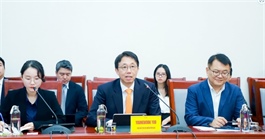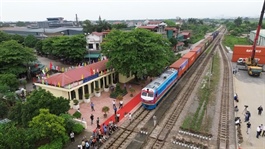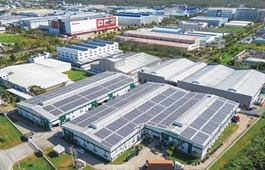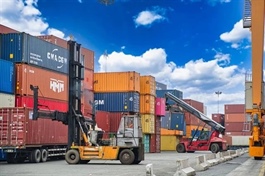Garment and textile sector to strengthen domestic supply chains amid trade turbulence
Garment and textile sector to strengthen domestic supply chains amid trade turbulence
Growing pressure from US tariff policies has cast a spotlight on the urgent need for Vietnam’s garment and textile industry to enhance self-sufficiency in raw materials, as profit margins across the sector come under increasing strain.
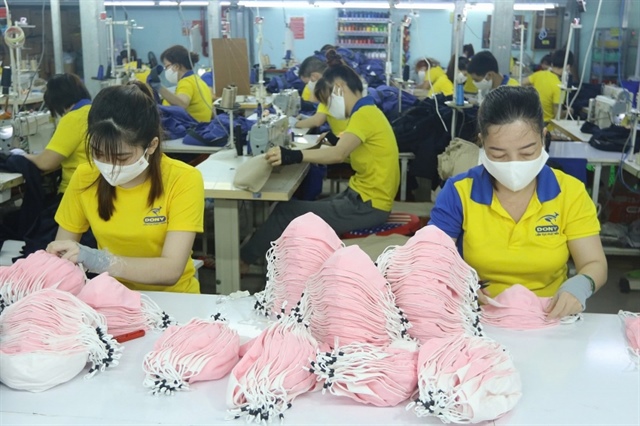
The garment industry is looking to strengthen domestic supply chains amid trade policy turbulence |
On April 10, the United States announced a 90-day suspension and a reduction of reciprocal tariffs to 10 per cent to over 75 trading partners, including Vietnam. The tariff policy, however, is an alarm for textile and garment industries to diversify their material supply sources.
According to the Vietnam Textile and Apparel Association (VITAS), Vietnam now has more than 3,800 textile factories nationwide. Of those, around 70 per cent produce finished garments, while only 6 per cent produce yarn, 17 per cent produce fabric, and 4 per cent operate dyeing facilities.
Vietnam consumes approximately 400,000 tonnes of cotton annually, but local supply chains provide just 3,000 tonnes, less than 1 per cent of the local demand. Domestic fabric production is also modest, covering only 25–30 per cent of market needs.
Truong Van Cam, vice chairman and general secretary of VITAS, said the industry has long sought to establish dedicated material supply centres.
“In 2004, Vinatex proposed two such centres to the Ministry of Industry and Trade, but the initiative never materialised. Similarly, Saigon 2 Garment Corporation once converted a factory into a materials hub, only to shut it down after a few months due to inefficiency,” Cam said at the Vietnam Saigon Textile & Garment Industry – Fabric & Garment Accessories Expo (Saigontex - Saigonfabric 2025) held on April 12 in Ho Chi Minh City.
“These initiatives failed mainly due to a lack of coordination among ministries and local authorities. There was no real supply of fabric to showcase, and manufacturers showed little interest. As a result, a large portion of manufacturing remains processing-based, with foreign clients dictating sourcing requirements from abroad.”
Vietnam’s industry remains heavily reliant on inexpensive raw materials from China, South Korea, and some ASEAN countries.
The country has no significant cotton-growing capacity, and yarn is mostly imported from India, China, and the United States. The costs for modernising textile and dyeing operations are prohibitive, with each dyeing machine requiring an investment of $10–12 million and complete weaving systems costing up to $100 million.
Pham Van Viet, vice chairman of the Ho Chi Minh City Association of Garment Textile Embroidery and Knitting, said domestic material supply currently meets just 40 per cent of total demand, including for foreign-invested companies.
Meanwhile, Vietnam still lacks concrete policies to support material development and has yet to evolve its textile sector into a fully fledged fashion industry, limiting its ability to expand domestic consumption amid a tough global climate.
“Vietnam has no real market for trading textile and footwear materials. What exists are small household markets for local retail, and the few manufacturers that produce raw materials only meet internal factory needs,” Viet said.
Developing a sustainable supply base
Despite recent export growth, Vietnam's garment industry remains vulnerable – especially in the US, which accounts for 40 per cent of total export revenue. The country is currently the second-largest garment exporter to the US after China.
Tran Nhu Tung, chairman of Thanh Cong Textile Garment Investment Trading JSC, stressed that to mitigate this risk, many small and medium-sized garment and footwear enterprises are scrambling to find alternative sources or comply with buyers’ sourcing directives.
“This poses numerous risks as importing countries implement stricter policies on product traceability, ESG compliance, and recycled material content,” Tung said.
To boost competitiveness and maintain export growth, Tung argued that Vietnam must create more value-added products.
“We shouldn’t compete on low labour costs like Bangladesh. Our advantage lies in improving product value through investment in machinery, personnel, and better raw materials,” he said.
At Viet Thang Jean Factory, the company has outlined three sourcing strategies to hedge against the impact of US tariffs: sourcing from countries not subject to tariffs, forming domestic supply partnerships, and - if necessary - continuing limited imports materials, and shared costs between producers and distributors.
Amid global trade tensions and disrupted supply chains, Vietnam still relies on imports for about 65 per cent of its textile inputs.
Viet urged the government to establish a support fund to help domestic firms localise 50–60 per cent of their material supply.
“Such a fund would enable technology upgrades and AI applications like we’ve used at Viet Thang Jean for the past five years, enhancing competitiveness through faster delivery, better pricing, and reduced exposure to tariff risks,” he said.
According to the Custom Department under the Ministry of Finance, Vietnam’s textile and garment exports to the US reached $3.8 billion in the first three months, up 15 per cent on-year.
- 17:33 17/04/2025







